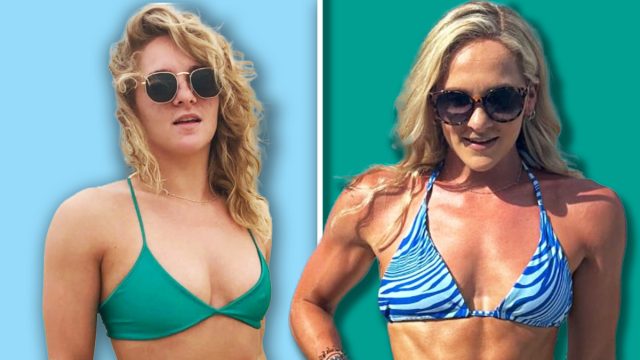5 Smart Ways to Recover from Weekend Overeating, a Fat Loss Coach Reveals
Did you overindulge over the past few days and feel helpless? Don't, says one expert. Amelia Annie Layng is a fat loss coach and founder of Peach Power Fit, whose mission is "helping women who've tried every diet drop fat & love what they see in the mirror" with her balanced method. In a new social media post, she details exactly what to do if you think you overdid it. "5 things I'd do immediately after a high-calorie weekend," she writes across the video.
Don't Panic
If you are stressed about your eating, your first reaction may not be the best. "Panicking that it's Monday Morning, the scale has spiked from a weekend of a few too many calories…! You better restrict yourself today… Well, don't!" she says in the post.
Don't Starve Yourself or Do a "Punisher" Workout
"Regardless of what you ate or drank this weekend, a black coffee, a 2-hour punisher workout, and 800 calories for the day will not help. Restricting yourself on a Monday is what leads to more overeating," she continues. Instead, she recommends doing these five things.
RELATED: Scientists Find The Perfect Walking Speed That "Melts Body Fat"
Eat a Protein-Packed Breakfast
Start the day with protein. "Eat a balanced, high protein filling breakfast the day after and hit your usual calories for the rest of the day. High protein yogurt or scrambled eggs with veggies or a smoothie with protein and berries. This will prevent overeating on snacks later," she writes.
Exercise
Get back into your usual workout routine, she encourages. "Hit your usual workout and steps that you usually do. Don't force yourself to do more. You don't need to! No amount of exercise will 'make up' what you've eaten," she says.
Fuel Up with Whole Foods
Also, get back into a healthy eating routine. "Get back to 80% Whole Foods again: Get back into eating some veggies, lean protein, and healthy fats, as this will help balance blood sugar and keep you feeling satisfied," she says.
Hydrate
Don't forget to hydrate. "Get some water down you: Start your day with a bottle of water and keep drinking lots throughout the day," she says. According to the Mayo Clinic, hydration is important for a variety of reasons. Water helps get rid of waste through urination, perspiration, and bowel movements, keeps your temperature normal, lubricates and cushions joints, and helps protect sensitive tissues.
RELATED: Man Tries Fittest Man on Earth's Routine for a Day, "It Was Brutal"
Don't Be Hard on Yourself
Don't beat yourself up over your weekend of eating. "Embrace the memories you made. You had fun, it was 1 day. Denying yourself things makes the journey such a difficult and unenjoyable experience. Simply get straight back to your usual routine. Don't stress about the scales. The journey can be enjoyable. Just pick up where you left off!!" she says. And if you enjoyed this article, don't miss 12-3-30 Walking Method: 20 Proven Tips to Lose Weight Faster.





